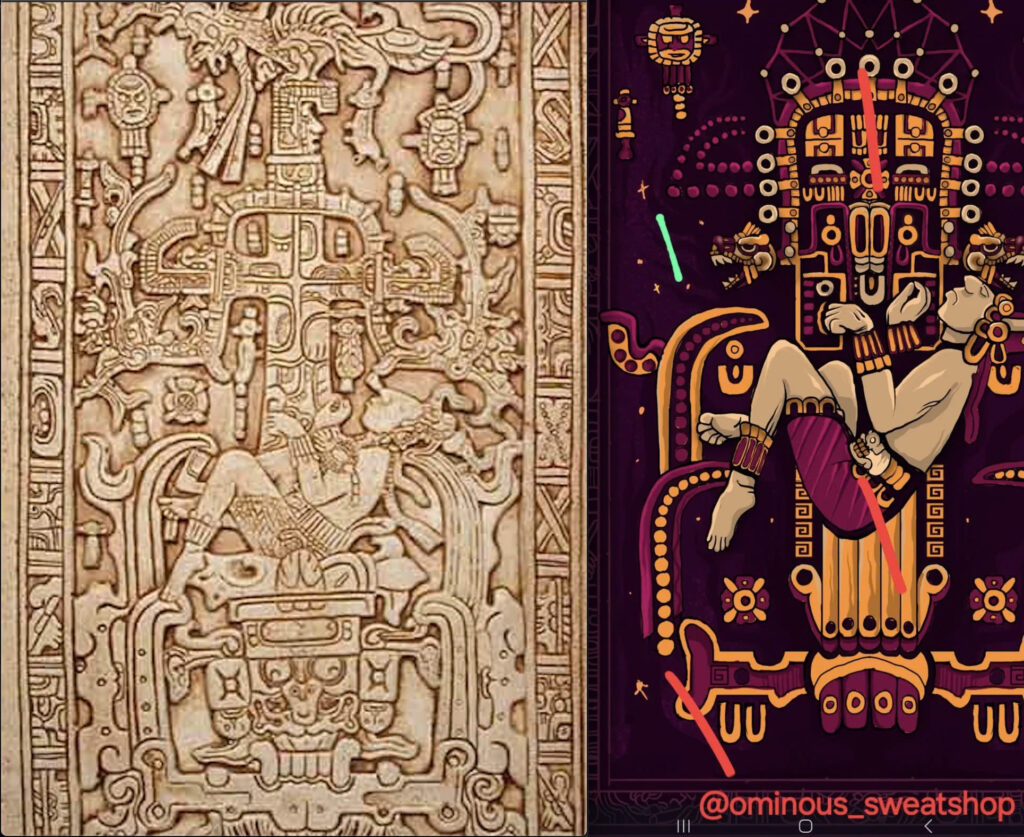In the heart of ancient Maya civilization lies one of archaeology’s most fascinating discoveries – the sarcophagus lid of K’inich Janaab’ Pakal, also known as Pakal the Great. This 7th-century masterpiece, found in the ancient city of Palenque, has sparked endless debates and theories about its true meaning, earning it the nickname “The Palenque Astronaut.”
The Mysterious Sarcophagus Lid

At first glance, the intricate carving appears to show something extraordinary: a figure that some interpret as an ancient astronaut. Pakal’s posture, reclined within what appears to be a complex mechanical structure, has captured imaginations worldwide. This unusual depiction gained significant attention following Erich von Däniken’s 1968 publication “Chariots of the Gods,” which proposed the controversial theory of ancient astronauts visiting Mayan civilization.
Understanding Through Mayan Cosmology
The Journey to Xibalba

Archaeological experts offer a different interpretation, rooted deeply in Mayan beliefs. Rather than depicting space travel, the carving illustrates Pakal’s sacred journey into Xibalba, the Mayan underworld. Central to this interpretation is the World Tree, a fundamental symbol in Mayan cosmology that connects the three realms: heaven, earth, and the underworld. Pakal’s position beneath this tree signifies his transition from mortal ruler to divine ancestor.
Celestial Connections and Scientific Achievement

The Maya were renowned astronomers, capable of creating sophisticated calendars and tracking celestial movements with remarkable precision. The sarcophagus lid’s intricate symbols reflect this astronomical expertise, positioning Pakal within the cosmic order – a concept fundamental to Mayan belief systems.
Legacy and Modern Interpretations
While scholars generally agree that the carving represents Pakal’s spiritual journey rather than an ancient astronaut, the “Palenque Astronaut” theory continues to captivate audiences worldwide. This enduring fascination speaks to humanity’s eternal curiosity about ancient civilizations and their understanding of the cosmos.
A Window into Ancient Wisdom
The sarcophagus lid remains a testament to the Maya’s sophisticated artistic and spiritual traditions. Beyond its role in modern speculation, it serves as a gateway to understanding the complex worldview of one of history’s most advanced civilizations. The artwork’s intricate details and profound symbolism continue to offer insights into how ancient peoples conceived their place in the universe.

The Palenque Astronaut stands as more than just an archaeological curiosity – it represents the intersection of ancient wisdom and modern interpretation, reminding us that the Maya’s rich cultural heritage still has much to teach us about our past and our endless fascination with the cosmos.

